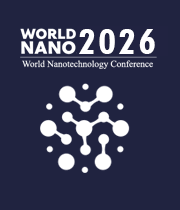Title : Changes in magnetic states in nanoscale FePd(Cu) films
Abstract:
Nanoscale films based on FePd with an ordered L10 phase have promising applications both for ultra high density magnetic storage media and for future spintronics devices. The purpose of this work was to study annealing conditions (vacuum, hydrogen) on the phase composition, structural and magnetic properties of equiatomic composition Fe50Pd50(5 nm) films with an additional Cu layer (0.3-0.9 nm). Films were deposited at room temperature by magnetron sputtering on SiO2(100 nm)/Si(001) substrates. Heat treatment was carried out in a vacuum and hydrogen environment in the temperature range of (400-700) °C for 0.5-2 h. The as-deposited and post-annealed films were investigated by X-ray analysis, RHEED, SQUID, FMR, AFM methods and Raman scattering spectroscopy. In as-deposited films a soft magnetic disordered A1 FePd phase was observed. The ordering process occurs by a thermally activated solid-phase reaction of transition from the soft magnetic A1 to the hard magnetic L10 FePd phase. In this case, annealing in hydrogen accelerates the ordering process by an order of magnitude. Thus, the hydrogen atoms that are introduced in the FePd film during annealing in the temperature range 400–700 °C significantly affect not only the dynamics of ordering processes and structure, but also the reversibility of magnetic states twice: ferromagnetic ? paramagnetic compared to vacuum annealing. In this case, the ordering process is influenced by two factors: the effect of introduced hydrogen atoms on the electronic structure of the film and the change in the volume of the unit cell during the A1 FePd into L10 FePd transformation. Changes in the hydrogen concentration in the FePd film with increasing temperature or annealing time during the ordering process and the formation of the L10 phase lead to variety in magnetic properties and states in sequence: soft magnetic ?1 (as-deposited film) → soft magnetic ?1 + hard magnetic L10 (600 °C, 1 h) → paramagnetic (625 °C 1 h ? 650 °C, 0.5 h) → hard magnetic L10 (650 °C, 1 h) → paramagnetic (650 °C, 2 h). Adding the alloying element of Cu to the FePd film leads to similar changes in magnetic states and a decrease in the coercivity value.



